Tea or beer?
Lilly’s
Lilly’s has long been a favourite spot for a tea room or cafe.
In the mid-1800s, James BROCK ran a drapery business here. Upon the death of the postmistress in 1861, he became the village postmaster, being succeeded by his son who ran the post office into the 20th century.
By the Second World War this building was The Old Tea House – some older residents remember it being visited by Churchill and other war leaders during the 1944 D-Day planning.
The telephone kiosk on the corner is one specially designed by Sir Giles Gilbert Scott (architect of Liverpool Cathedral) and installed in all villages and towns with a post office to celebrate King George V’s Silver Jubilee in 1935.
This building and Culverts may have been ‘incursions’ into the original Wickham Square – many villages and market towns lost their open squares as temporary market stalls became permanent shops.
Wickham’s lost pubs
This end of the Square is however more associated with beer than tea! There were four pubs in this small area. To your right was the Druid’s Head (now a hair salon) and beyond it, on the far side of the alley, was the White Lion (now flats). The Bugle was on the road leading from the Square to Dairymoor, with the Bedford Arms was at the bottom of Dairymoor itself – both now houses.
The landlord of the Druid’s Head was convicted in 1874 of selling short measures despite his defence that he was just using the jugs his father had left him! The White Lion was the last to close, ‘calling time’ in 1996.
The livestock for the weekly market were kept on Sale Meadow??Dairymoor so there must have been enough thirsty farmers to support all four pubs.
Next to the Bugle (now Bugle cottages) was the village garage with its petrol pump, the base of which can still be seen in the pavement.
Heming & Co.
Occupied by James KNIGHT, a blackmith in 1841, and listed as an ‘ironmonger’ by 1851, Heming & Co. hardware shop was founded in 1895. Heming made deliveries in Wickham and the surrounding area, selling hardware and paraffin.
The premises were almost a casualty of war when in WW2 an incendiary bomb set fire to its stock of wooden wheelbarrows, fortunately extinguished by the landlord of the White Lion.
Wickham House and Old House
Dominating the south east of the Square, are two fine Georgian fronted buildings, Wickham House and the Old House. Wickham House has an old service tunnel running under the road to Heming & Co. which was probably used was its kitchen. Wickham House was the home and medical practice of the village doctors from the 1900’s until about 1980.
BEDFORD PLACE AND DAIRYMOOR
The road linking the Square with Dairymoor was known as ‘The Alley’.
The ‘Old Garage’ was formerly the home of the Hammond family. Brothers George and Richard ran a garage here for many years, with a manually operated petrol pump in front and a large workshop to the rear of the property.They also ran a taxi service – and a betting shop!
Bedford Place is the old name for what is now called Dairymoor– the land was once owned by Mary BEDFORD.
It is believed the name ‘Dairymoor’ derived from the pasture beyond this road on which the cattle from Buddens Farmhouse grazed.
The area once boasted several public houses. The Bedford Arms, at what is now No. 5 Dairymoor, the White Lion and the Bugle. With advent of the railway, the White Lion was rebuilt as a hotel, perhaps in anticipation of visitors requiring lodgings.
The pub remained part of Wickham life with the pub being successfully run by Brian and Jean KINGDOM, later joined by their son Tony. They ‘called time’ in 1991. The property has since been converted into the Lion flats.
The alleyway running alongside these flats was once known as ‘The Droke’, an archaic term for ‘passageway’. It continues onto a probable drovers route heading towards Winchester from Bridge Street.
HEADMASTERS & BYRNE RUNCIMAN
There were several houses on this site. By 1861 William BUDD, one of the local bakers, was running a ‘beer house’ which became known as the ‘Druids Head’.
His son Edwin took over the business and, in 1874, was charged with using ‘deficient measures’- pint mugs that were nearly half less than they should have been! Apparently he had inherited the mugs from his father but was found guilty and fined. Unsurprisingly, Edwin relinquished the pub license a few months later.
As with other pubs, the Druids Head was a casualty of the early 20th century movement to reduce the number of public houses. By 1915, the pub was earmarked for closure, subject to compensation for redundancy.




